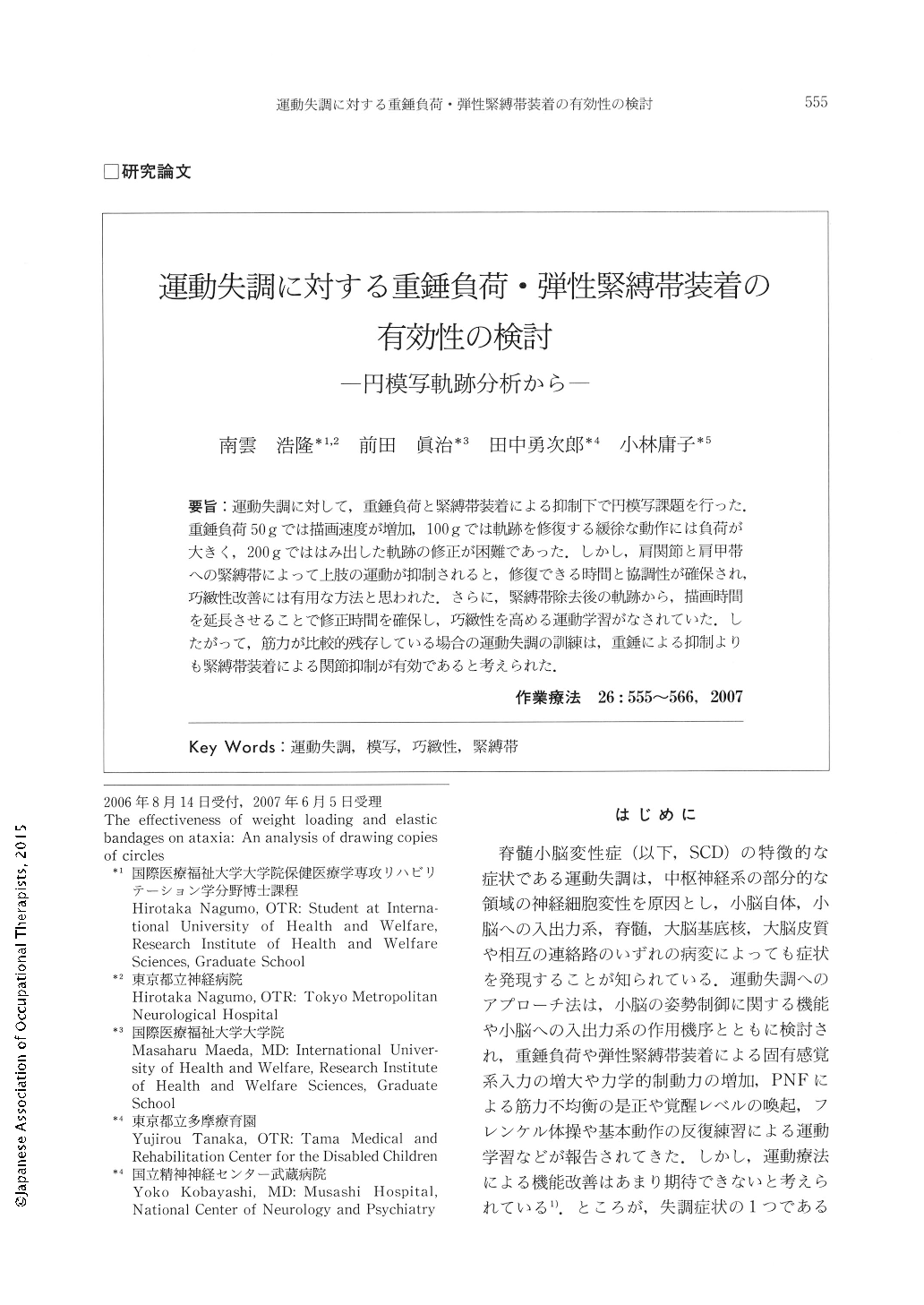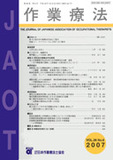Japanese
English
- 販売していません
- Abstract 文献概要
- 1ページ目 Look Inside
- 参考文献 Reference
- サイト内被引用 Cited by
要旨:運動失調に対して,重錘負荷と緊縛帯装着による抑制下で円模写課題を行った.重錘負荷50gでは描画速度が増加,100gでは軌跡を修復する緩徐な動作には負荷が大きく,200gでははみ出した軌跡の修正が困難であった.しかし,肩関節と肩甲帯への緊縛帯によって上肢の運動が抑制されると,修復できる時間と協調性が確保され,巧緻性改善には有用な方法と思われた.さらに,緊縛帯除去後の軌跡から,描画時間を延長させることで修正時間を確保し,巧緻性を高める運動学習がなされていた.したがって,筋力が比較的残存している場合の運動失調の訓練は,重錘による抑制よりも緊縛帯装着による関節抑制が有効であると考えられた.
We had 33 subjects with neurodegenerative disease, ataxia tracing a circle while restrained by weight loading and elastic bandages. As a result, with 50g of weight loading, the drawing speed increased. With 100g of weight loading it did not restrain the ataxia sufficiently, but it suggested the load was large enough for the operation to slowly restore. With 200 g, the restoration of the part which was stuck out became difficult because of the weight. However, when the quick exercise of the upper limbs was restrained by an elastic bandage on the shoulder joint and the scapular-region, the time to sufficiently restore the part which was stuck out, and with cooperativeness, it is possible restoration could be secured. The drawing, after removing the elastic bandages, was coping with the ataxia by the decrease in acceleration. Moreover, it was suggested that weight loading led to the motor learning which improved skill by extending the time to write. We thought that restraining the shoulder joint and the scapular-region with elastic bandages was more useful than weight loading in practice when the subjects had enough power.

Copyright © 2007, Japanese Association of Occupational Therapists. All rights reserved.


